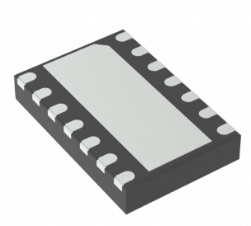- Online chat

MCP2518FDT-E/QBB
The MCP2518FDT-E/QBB is a high-performance CAN (Controller Area Network) controller IC from Microchip Technology, designed to support CAN 2.0A/B protocols for robust communication in industrial and automotive systems. Housed in a compact 24-pin QFN package, this device operates over an extended temperature range of -40°C to +125°C and supports data rates up to 1 Mbps. It integrates advanced features for flexible message handling and error management, making it ideal for embedded systems requiring reliable, low-power CAN bus connectivity.
Key Features
This controller features a dual operating mode (listen-only or normal), 2 transmit buffers, 2 receive buffers, and 8 mask/filter registers for efficient message filtering. It includes enhanced error detection, automatic retransmission, and bus-off recovery capabilities, ensuring fault-tolerant communication. The MCP2518FDT-E/QBB operates with a supply voltage of 2.7V to 5.5V and supports an SPI interface (up to 10 MHz) for microcontroller communication. It also offers low-power modes (e.g., sleep mode) to reduce power consumption in battery-operated devices and includes built-in ESD protection (2 kV HBM).
Applications
Primarily used in automotive electronics (e.g., engine control units, infotainment systems), industrial automation (factory robots, sensor networks), and IoT devices requiring CAN bus integration, this controller is critical for applications such as smart grid infrastructure, medical equipment, and agricultural monitoring systems. Its compact QFN package and SPI interface enable seamless integration into space-constrained embedded systems while ensuring reliable communication in harsh environments.
Summary
The MCP2518FDT-E/QBB delivers advanced CAN bus functionality with enhanced error resilience, flexible message handling, and low-power operation, making it a versatile choice for industrial and automotive IoT systems. Its compatibility with a wide voltage range, compact form factor, and robust design simplify integration into embedded applications demanding high reliability and efficient power management. This device is essential for engineers developing CAN-enabled solutions in resource-constrained yet performance-critical environments.







